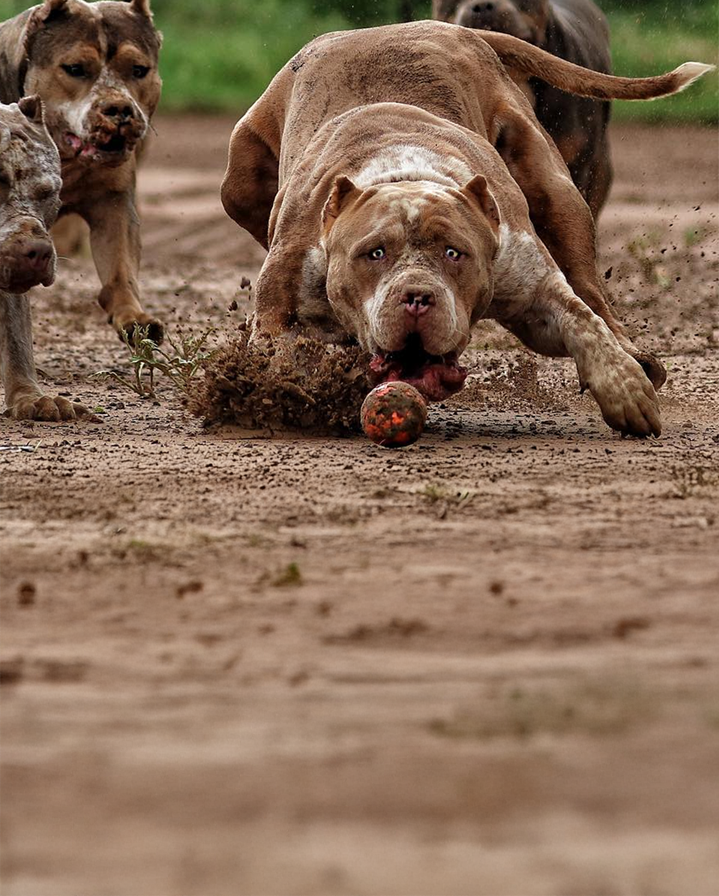How to Get a Therapy Dog for Anxiety
Wondering how to get a therapy dog for anxiety? Therapy dogs can be game-changers for people who are suffering from things like anxiety, depression, loneliness, and other mental issues.
The calming and innocent presence of these furry friends can work wonders in providing comfort and alleviating suffering—which is why we created this guide to help you learn how to get a therapy dog.

Therapy dogs and their owners often work together as a team to uplift and comfort people in various high-stress environments. From nursing homes to schools and more, therapy dogs can be tremendously helpful. So you want to know how to get a therapy dog? Let’s get into the steps you can start taking now to get a fully certified and licensed therapy dog.
What is a Therapy Dog?
A therapy dog is a dog that is taught to provide comfort, affection, and emotional support. These pups are specifically trained to aid people who are experiencing mental suffering and trauma. Dogs have a purity and kindhearted innocence that can be truly medicinal in dispelling sadness and nervousness.
They often work in settings such as hospitals, nursing homes, and even schools. In the aftermath of a disastrous situation, for example, therapy dogs can be introduced to console and love up people who are under intense stress.
Generally speaking, therapy dogs fall into one of three categories: therapeutic visitation dogs, animal assisted therapy dogs, and facility therapy dogs. Here’s a brief description of each:
Therapeutic Visitation Dogs
Therapeutic visitation dogs visit hospitals, schools, and mental health centers to cheer up and comfort patients and visitors. The effectiveness of therapeutic visitation dogs has been proven many times over the years. This type of therapy dog is the most common.
Animal Assisted Therapy Dog
Animal assisted therapy dogs are used in rehabilitation clinics. They can improve patients’ quality of life in a variety of ways. They help people to cope with mental conditions, and they can aid in educating and motivating people, as well as providing recreation.
Animal assisted therapy (AAT) is also implemented, under the supervision of a therapist, to help people restore their mobility through motor-control exercises.
Facility Therapy Dog
Facility therapy dogs are most often used in nursing homes. They offer much-needed companionship to the residents. Along with providing treasured company, they can be trained to alert the staff about medical emergencies or issues.
The Difference Between Therapy Dogs and Service Dogs
You may hear the terms used interchangeably, but therapy dogs are not service dogs. The ADA’s (Americans with Disabilities Act) definition of a service dog is a dog that is specifically trained to perform certain tasks for an individual with a disability.
Service dogs perform tasks such as guiding the blind, assisting people in wheelchairs, and alerting deaf people of important noises such as fire alarms and doorbells. The jobs performed by a service dog must directly relate to the disability of the dog’s owner.
Service dogs must be focused on their specific job. They are trained not to interact with people or animals other than their owner while they are working. Therapy dogs, by comparison, are encouraged to be friendly and to calmly interact with many different patients.
There are places and situations in which service dogs are permitted and therapy dogs are not. This is because therapy dogs are not included in the Americans with Disabilities Act.
How to Register Your Dog as a Therapy Dog?
So you want to own a registered therapy dog? Good thinking! The process is pretty straightforward. Of course you’ll first need to adopt a dog and give them the training they need to work as a therapy dog. Some dogs receive formal training from professional trainers, and some are effectively trained at home by their owners.
After checking off a few prerequisites, the process of getting your pup registered involves passing an exam that will prove your dog’s ability to be an effective and well-behaved therapy dog.
Let’s dive in and explore the process in more depth.
Step 1: Adopt a Dog
First things first, adopt a dog! Your therapy dog must be friendly, well-behaved, and they must enjoy human contact. Any breed has the potential to excel here, given the right temperament and the right training. Some breeds especially well-suited to therapy work are Labs, Bernese Mountain Dogs, and Golden Retrievers.
We always suggest adopting dogs from the shelter rather than purchasing them from a breeder. Younger dogs can be easier to train and easier to bond with, but keep in mind that there are always exceptions. Some older dogs at the shelter can be wonderful in therapy roles.
You’ll want to spend time with the dog and pay attention to the nature of these interactions. If the dog has a gentle and friendly temperament, it will make for a good therapy dog.
Step 2: Train Your Therapy Dog
Your best option for therapy dog training is to hire a professional to aid you in the process. There are certain organizations, as well as private trainers, that offer these services. That being said, it’s not uncommon for people to successfully train their dog themselves.
It’s important that you begin training your dog early on in the formation of your relationship. There are various behavior patterns you’ll need to encourage and others you’ll need to discourage.
For example, to be effective for therapy work you’ll need your pup to be obedient, friendly, outgoing, and relaxed. Jumping on people, barking, chewing on inappropriate things, or behaving aggressively are all big no-nos. At the other end of the spectrum, a dog that is too timid, skittish, or antisocial is also not well-suited for therapy work.
Your dog will be around a lot of different people, in a variety of environments. Exposure to some of these different situations, as well as the socialization process in general, will be a crucial element in your dog’s training.
In the next section we’ll discuss some of the specific requirements for therapy dog certification.
Step 3: Register Your Dog
There are different organizations you can go through to get your therapy dog certified. You’ll need to provide medical documents proving that your pup is up-to-date on their shots and immunizations. You’ll also need to verify that your dog is at least one year old.
Before beginning the registration process your dog must pass the Canine Good Citizen (CGC) test. By doing so your dog will prove that they are a well-behaved and trustworthy member of the community.
Your dog’s behavior will be observed and tested to see that they:
- Are well-behaved in a crowd setting.
- Respond to basic commands, such as sit, lie down, and stay.
- Politely greet friendly strangers.
- Come when called.
- Are comfortable being petted.
- Are trained to walk on a leash without pulling.
- Are well-behaved and polite around other dogs.
- Don’t react inappropriately to distractions.
- Can be left with someone other than the owner.
- Are well-behaved and comfortable being groomed and handled (including paws and ears).
After passing the CGC test, you’re ready to register your dog with an officially recognized therapy dog certification organization. Your dog must be registered with one of these organizations to become an approved therapy dog.
You’ll either apply online or in person, depending on the organization you choose. Pet therapy organizations can also connect you with volunteer opportunities and appropriate facilities. You’ll be covered by the organization’s insurance. We encourage you not to volunteer without this liability coverage.
Maintain Your Therapy Dog Certification
There are a few things you’ll need to do to maintain your therapy dog certification. Always remember to keep your therapy dog neat, clean, and well-groomed. You’ll also have to make sure your furry friend is up-to-date on all their immunizations, including a negative fecal test once a year.
Having a therapy dog is a wonderful way to serve your community. It’s extremely rewarding, and is simply a win-win situation for everyone involved. A relaxed and friendly pup with the right training is a shoo-in for successful therapy work. Just follow this guide, make sure you’re prepared for your evaluations, and you’ll be all set.
If you do plan to get a therapy dog for anxiety, don’t forget to check out our top-rated high protein dog food. It’s a high-performance dog food you can trust, with high quality ingredients and transparent labeling. We know your therapy-dog-to-be will love it.








